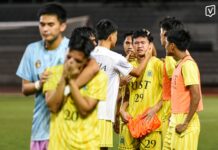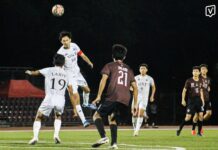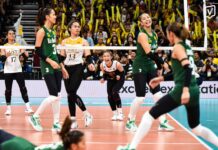CALL HIM the stabilizing factor.
It is no surprise that Fr. Rolando de la Rosa, O.P., a two-term UST rector, is now back at the helm of the Pontifical University so as to navigate the difficult transition following the recent leadership crisis that saw the resignation of the University’s top three officials.
Tasked by the Dominican Master Genereal Fr. Carlos Alfonso-Aspiroz, O.P. to spearhead the review of the redevelopment and expansion of the UST Hospital, De la Rosa was named acting rector after Fathers Edmund Nantes, O.P., Ernesto Arceo, O.P., and Juan Ponce, O.P., resigned as prior provincial, rector and vice-rector, respectively, last September 8.
It appears De la Rosa will get a permanent rectorship after all as he received the most number of votes from fellow Dominicans and UST officials during a three-level election this month.
According to UST Secretary-General Fr. Isidro Abaño, O.P., it will only be a matter of time before De la Rosa would again be formally installed in the rectorship, as acting Dominican Philippine Prior Provincial Fr. Hilario Singian, O.P., who’s effectively acting UST grand chancellor and successor of Father Nantes, is expected to quickly transmit the balloting results to the Master General in Santa Sabina, the Dominican curia in Rome, for endorsement to the Vatican’s Sacred Congregation for Catholic Education and Seminaries. Santa Sabina and the Vatican Congregation are expected to put their imprimatur on De la Rosa’s election since he is already well-known in Rome, having been a two-term UST rector.
De La Rosa’s comeback to the rectorship reflects the kind of leadership paragon that UST officials want to adopt at this crucial instance – one that is decisive and prudent.
It is undeniable that in his two terms has rector in the 1990’s, De la Rosa managed to marry tradition and reform as manifested by his programs and projects that continue to have an impact on UST and the higher-education system in the Philippines. The future he had carved for UST during his time remains with us today: the establishment of the Center for Campus Ministry and the Educational Technology (EdTech) Center, the expansion and consolidation of the UST Archives, the tumultuous papal visit in 1995, the four consecutive UAAP basketball championships of the Tigers, and lest we forget, his many academic reforms. The last was particularly noteworthy, since UST’s status as having the most number of Centers of Excellence (COE) and Centers of Development (COD) in academic programs among Philippine private universities was largely achieved during De la Rosa’s tenure as rector. As a signal of how he is much respected as an educator and manager, De la Rosa was named later as chairman of the Commission on Higher Education, a Cabinet position.
As a clear manifestation of his prudence, De la Rosa, upon accepting the role of trouble-shooter for the hospital privatization controversy, has declared the willingness of the University to pay the debts of the now-crippled hospital corporation so as to put the hospital operations back in equilibrium.
However, in an open letter, titled “Veritas vos liberabit” and subtitled “The truth shall set you free: Clinico-Pathological dissection of UST Hospital, Inc.,” a group of UST doctors argued that “UST cannot be the golden parachute and safety net that will bail out the mismanagement of USTH, Inc.” since it (the hospital) has already became a separate entity from the University.
The disgruntled doctors seem to point out that the payment for the liabilities would be sourced from the students’ tuition. But De la Rosa has put his foot down: the liabilities would be assumed by UST. He clarified that “special funds,” and not tuition, would be used to pay the liabilities. Moreover, he said that whatever liabilities to be paid would be reviewed by a committee he had appointed to re-evaluate the expansion plan as well as its costs. He held out the possibility that the loans and obligations contracted by the dissolved hospital corporation would be renegotiated. He stood pat on his declaration that the patrimony of UST and its hospital would always be protected.
Since De la Rosa is now effectively the CEO of the hospital, the buck stops at his desk. As part of his duty to steward and articulate the University’s interest, he is deemed to act prudently and wisely. And these virtues have been manifest by his swift but firm moves to resolve the issues hounding the hospital.
His decisive action is bearing fruit since a semblance of order has been imposed in the hospital. He has also eased the tension and anxiety that were the necessary wages of the September crisis. All of this would redound to better industrial relations and overall, better hospital operations and a more stable financial outlook. For how can the hospital continue to “offer the highest institutional standards of formation for future nurses and doctors and the highest level of medical care in both its clinical and pay divisions,” as the letter states, if it is financially handicapped and psychologically ill-motivated?
It is hoped that De la Rosa’s three-man Hospital Administration Team or HAT composed of Dr. Mateo Bagsic as medical director, Dr. Rolando Cabatu as ancillary services director, and Dr. Edgardo Orlina as administrative director would work hand in hand to stabilize the conditions at the hospital. It is also hoped the hospital personnel would extend their cooperation to the team.
To shelve the recent gloomy chapter in the University’s four-century-old history requires a person with a proven track record. De la Rosa therefore may be the best qualified to steer UST and its hospital through rough sailing.
With De la Rosa as “transition” rector, the Thomasian community is assured of a steady leadership, given the continuity of the measures that he has already implemented to address the Master General’s concerns particularly on the protection of the University’s patrimony. Corollarily, he is the most qualified to ensure a stability and continuity of administrative and academic reforms and measures, many of which, admittedly, were conceptualized and jumpstarted during his glorious rectorship in the 1990’s.
To some extent, De la Rosa’s difficulty may be the fact that he was so good as rector in the 1990’s that people’s expectations at this time may be so high as to be impractical. The biggest challenge for De la Rosa as the “comeback rector” would be the overblown expectations attached to his reputation as a tried and tested leader and manager.
The Thomasian community should not make things more difficult for him by asserting demands that would not fit well with De la Rosa’s legendary virtues of prudence, wisdom and effectiveness. Instead, they should support him and cooperate with his measures to ameliorate UST and guide it through the challenges of the new millennium. UST is back in good hands. So all Thomasians should extend Father De la Rosa a helping hand for the sake of the University they love.

















